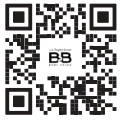
While bank economists expect credit conditions to continue to weaken compared to the extremely strong position of the last few years, their outlook for the first half of the year is notably more optimistic, according to the American Bankers Association’s latest Credit Conditions Index released recently.
The latest summary of ABA’s Credit Conditions Index examines a suite of indices derived from the quarterly outlook for credit markets produced by ABA’s Economic Advisory Committee (EAC). The EAC includes chief economists from North America’s largest banks. Readings above 50 indicate that, on net, bank economists expect business and household credit conditions to improve, while readings below 50 indicate an expected deterioration.
The Credit Conditions Index improved to its highest level in six quarters as EAC members expressed cautious optimism about the prospects for the U.S. economy this year, according to the Q1 2024 report:
• With job growth expected to continue, inflation forecasted to linger above the Federal Reserve’s 2% target and interest rates expected to trend lower later this year, the near-term outlook for U.S. consumers remains positive.
• At the same time, credit quality and availability remain areas of concern, particularly for consumer lending.
• Overall, with economic growth predicted to slow this year, banks are expected to continue to exercise caution when extending credit but to a lesser degree as recession concerns fade away.
“ABA’s latest Credit Conditions Index indicates that the economy is on solid footing, and banks intend to continue prudently extending credit to both consumers and businesses,” said ABA Chief Economist Sayee Srinivasan. “The prospect of lower interest rates later this year should boost confidence and credit demand to sustain business growth. However, banks will remain vigilant should signs of unexpected weakness develop.”
For the first quarter release:
• The Headline Credit Index increased 14.8 points in Q1 to 19.2, reflecting a general improvement in optimism among bank economists. However, the sub-50 reading still indicates that lenders are likely to continue to exercise caution when extending credit to both businesses and consumers over the coming two quarters.
• The Consumer Credit Index rose 9.8 points from a series low to 11.5 in Q1. Though the index improved modestly, only one EAC member expects consumer credit availability to improve in the next six months, and no members expect consumer credit quality to improve. Overall, the sub-50 reading suggests that credit conditions for consumers will continue to weaken over the next two quarters, driven mostly by concerns about credit quality rather than credit availability.
• The Business Credit Index improved 19.8 points in Q1 to 26.9. Though the majority of EAC members still expect business credit quality to deteriorate over the next six months, nearly half expect business credit availability to improve. Overall, the sub-50 reading indicates that credit conditions for businesses are likely to weaken over the next two quarters.
The ABA Credit Conditions Index is a suite of proprietary diffusion indices derived by the American Bankers Association from surveys of bank chief economists from major North American banking institutions. Since 2002, bank economists have forecasted credit quality and availability for both businesses and consumers, indicating whether they expect conditions to improve, hold steady or deteriorate over the ensuing six months.

To view or share this content online, use this QR code.